What Is Email Marketing?
When you are selling or marketing products and services, you may be selling in various ways, including phone calls, in-person meetings, or word of mouth.
Adding email marketing to the list is another step towards generating real interest in your product or service.
Sending emails to prospective customers is more than just mass-sending the same email to 10,000 people on a contact list.
Some customers may be interested in buying your services today. Others may not even be aware of your service category.
Email marketing includes all of the above customer types and more. Emails have the power to persuade or to turn off customers, and must be highly tuned to the particular person to have the best effect.
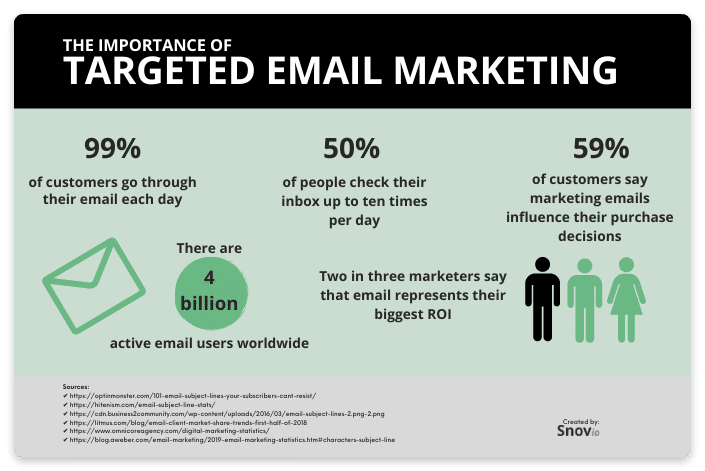
But your sales team can’t afford to hire enough marketers to custom-tailor every email.
The solution is using an email marketing tool. Each tool is different, but in general, they all provide a way to qualify each potential customer and send them just the right message at the right time.
This requires the usage of a lot of analytical tools and automation to work just right.
What is Lead Generation?
Lead Generation, or “Lead Gen,” is the process of converting customers from different stages of awareness or interest until eventually, they may be ready to buy your product or service.
It’s about slowly coaxing customers and educating them about your industry. When they’re ready for sales, they will come to you.
Lead generation techniques today are a full 180º from the lead generation of ten years ago.
Cold calling using telemarketers has very little long-term value and often develops a bad reputation. Similarly, sending sales emails to prospects is much less effective than sending well-qualified emails.
Sending well-qualified emails is easy if you have the time to individualise emails and send them personally. This is still the way to achieve the highest conversion rate per customer.
But many less interested prospects can always be receptive to what you have to offer.
That’s why you need to manage your leads and qualify them. You might want to look into an email marketing agency that can fully professionalise your email program and squeeze every bit of ROI from it that can possibly be squeezed.
Lead Qualification Is Critical For Lead Management.
Lead management doesn’t happen in a vacuum. That is, you don’t say that your leads are ready to be sent product sales information just because they have been receiving emails for six months.
You need more information to make the right decisions based on the lead’s sales funnel stage.
To qualify leads, you have a lot of information at your disposal. If the person has filled in an online form, you can track them with tools like Google Analytics.
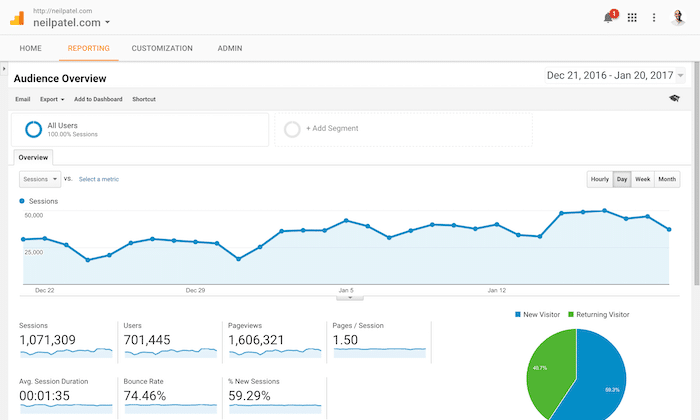
Tools like this can enable you to see what web pages prospects browsed immediately before or after clicking on your form.
You can use this information to tell if they are prospective customers with high purchase intent or if they’re not quite ready to buy yet.
By segmenting your leads into different groups of interest level, you are building a sales funnel. Treating the less interested group differently than the more interested groups is how you can get more sales from a smaller sales budget.
By tailoring messaging more directly to these groups’ interest levels, your company will also see reputation boosts compared to cold calling techniques.
People really don’t like having their time taken away for something they’re not interested in. By segmenting your messaging and sending fewer messages but tailoring your messages to be highly targeted, you can slowly build interest.
By the time the prospects are exposed to your product sales information, they will be more likely to be envisioning themselves as purchasers of your product or service.
As you can imagine, collecting data and computing performance metrics is a lot of work. That’s why you can use automation tools. Many tools tie-in this analytics data directly with CRM (customer relationship management) software.
CRM software helps companies manage leads, but without lead qualification data, they lack the vital decision information to know what to do with the leads.
What Analytics Do You Really Need?
Analytics can be captured at many stages of the marketing funnel. When very little is known about a prospect, you need to find a way to collect information gently.
Depending on how your new leads are generated, you can set them in one of many lead categories.
For example, if leads click on a social media post about your services, you should send them emails only about services, not products.
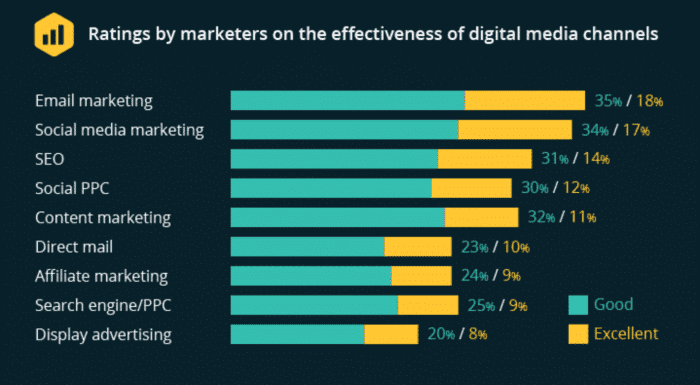
Let’s say they entered their email address to download a slide deck but declined to receive your newsletter. With this information, you can place them in the lowest tier of marketing qualified leads for services.
Based on the lead’s qualification level, you should send them emails less often, specifically regarding services. You should also wait for some period before sending them other emails about products.
Since they have indicated that they don’t want weekly newsletters, you know they are in the lowest interest tier.
Still, they have provided you with the first small amount of analytics information, and you can use this in the future.
The first impression is perhaps the hardest to do well, but when you send the first email to the marketing-qualified lead, you can begin to collect valuable data to qualify them further.
Once you have enough data, you’ll be able to move them down the marketing funnel, and then to the sales funnel, and finally to the customer funnel.
Email marketing tools allow you to qualify the lead using advanced metrics like email click rate, click-through, engagement time, and more.
Click rate tells you how many prospects clicked on a particular email to open it. You can perform A/B testing between different email variants to determine which phrasing or designs have better performance.
Email Opens
When a user clicks on your email to open it, email marketing tools can record this event. As the first interaction with your marketing material, you now have some critical data that you can act on.
You can automate sending follow-up emails based on the time that users opened the first email.
Email Replies
A well-known way to increase engagement is by asking the reader to respond with their thoughts and comments. It sounds more natural and encourages the readers to create a conversation with your company as if they are talking directly to the CEO.
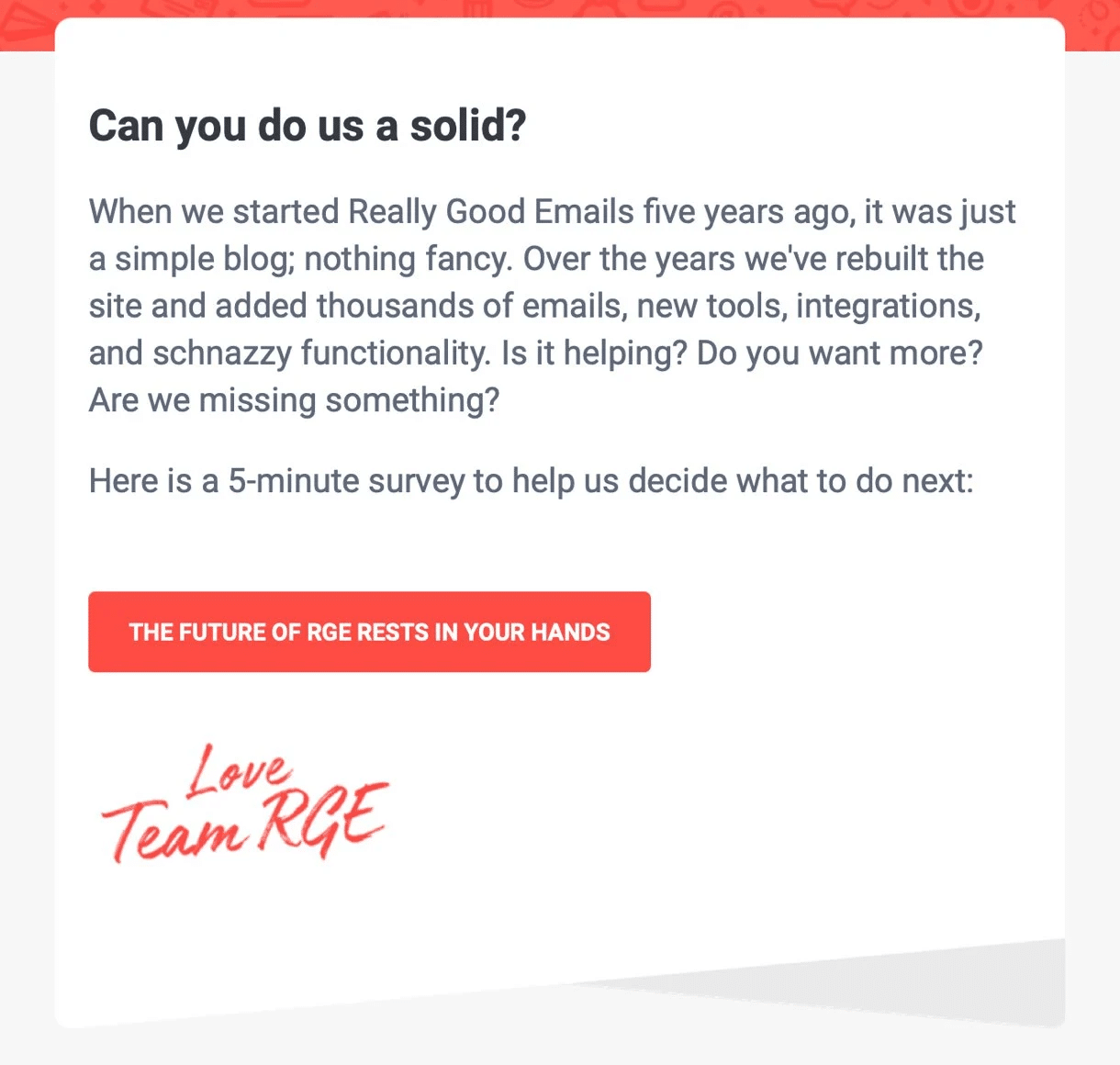
Email marketing tools are the most powerful when tracking the replies and even automatically taking CRM action based on the response received.
Email Clicks
Prospective customers that open emails are great, but when they click on something in the email, that’s even better. Your email links can be tracked and provide information to your analytics services on your website.
Click-through to the website is one of the most powerful email metrics because it shows that users are interested enough to learn more.
Website Visits
Once users reach your website, they become page visitors. Email marketing tools should track the number of page visits that your website obtains from these website visits.
Similar to analytics tools like Google Analytics, email marketing can track many attributes about the customer’s site visit. These site visit attributes can be fed into your CRM.
The best email marketing tools serve as a connection between the CRM and your customers. With this data, you can score each lead and move them automatically up or down the sales funnel.
Some of the most critical data types for analytics are:
- Who visited the site and when? Demographics, IP address location information, and browser type are used to assess engagement. Did the user view it on a mobile device? How long did they stay on the site? Did they visit right after opening the email or sometime after?
- Which page was viewed? Each page and object on the page can record if the user clicks, hovers, or even watches part of a video. You can record and score higher interest levels for customers who looked at the pricing page or added something to the cart.
- How did they find you? The referral link says a lot about the lead’s interest level. Whether they found your site from a search, another product or service, or by typing in your URL directly, each option tells a lot about what type of customer they are.
Email Analytics vs. On-Site Analytics
Marketers need to understand the difference between email marketing tools and on-site analytics. Some tools capture information about the customer’s interaction with the email itself.
Other services might focus solely on the website and only track the users once they reach the site.
Another analytics category gathers information about customers from social media, their interactions with your posts, or even videos on a video platform.
Many different analytics sources are available because of the wide-ranging mediums now available for communication with an audience.
The best marketing solution is one that facilitates communication between different tools. By combining as much information as possible, better decisions can be made.
Customers often proceed through a couple of sales funnel levels all on their own, without requiring intervention from a sales team. This progression can be tracked through the smart use of analytics.
For example, some email marketing tools can directly combine analytics information from emails and on-site analytics into the decision-making process.
CRM Integration Is Critical
Chances are, your marketing team uses a CRM, or Customer Relationship Management software. These tools often include project management, accounting, time tracking, proposals and contracts, and communication, all in one.
Some include email marketing built-in, but the automation capabilities aren’t as robust as a purpose-built email marketing tool.
These tools can schedule campaigns, manage sender identities, and collect analytics on customers.
The goal is to send the right message at the right time and learn the customer’s level of interest. There’s no way better than to connect your email marketing tools directly into a CRM.
The email and on-site analytics systems collect a lot of data. This data can be lost, though, if the reporting is not well integrated.
When choosing an email marketing tool, pay special attention to the CRM integrations and the ability to provide information directly to the CRM’s decision-makers.

CRM allows companies to segment the work involved in maintaining relationships with customers.
Your company might have separate teams involved with creating contact lists, calling or messaging contacts, and even acting as customer support, all within the same CRM.
Part of the CRM integration process is sending data from the CRM to the email marketing tools. For example, useful CRM integrations don’t just allow you to subscribe contacts to specific email campaigns from the CRM.
The best integrations perform real-time synchronisation of contact databases in both directions.
Another essential step of the CRM integration process is to allow for dynamic sender information. Email marketing tools have long allowed for sending campaigns from the CEO, CTO, or other identities, for making messages seem more critical.
By connecting dynamic sender information to the CRM stage, another level of personalisation can be achieved.
Excellent email marketing tools include this high level of attention to detail. Based on the marketing or sales funnel stage for a particular customer, the sender can be customised automatically.
Even more time and energy can be saved by automating the funnel selection process.
Email marketing tools that include their internal analytics processing system can rank leads without connecting to a CRM.
However, that ranking data is much more powerful within a CRM because automatic lead progression can be achieved through the funnel stages.
It’s even possible to connect multiple email management systems. Why use just one, when different software has unique features which you want to use together?
If you’re genuinely a power marketer, you can connect multiple email marketing systems and use automation to keep everything synchronised.
What is Lead Scoring?
Lead Scoring is when your tools assign points to each lead based on analytics data and rules that you set up.
For example, lead scoring points can expire after a certain number of days, based on what action was taken by the prospective customer.
Because the points expire after some time, any points indicate recent interest in your marketing material.
Many companies have a time component to the lead scoring systems. “Hot” leads might be the ones that have shown interest in the last week or two.
Cold leads might be ones that have shown interest in the previous three months. And dead leads might be ones that have clicked on the unsubscribe button.
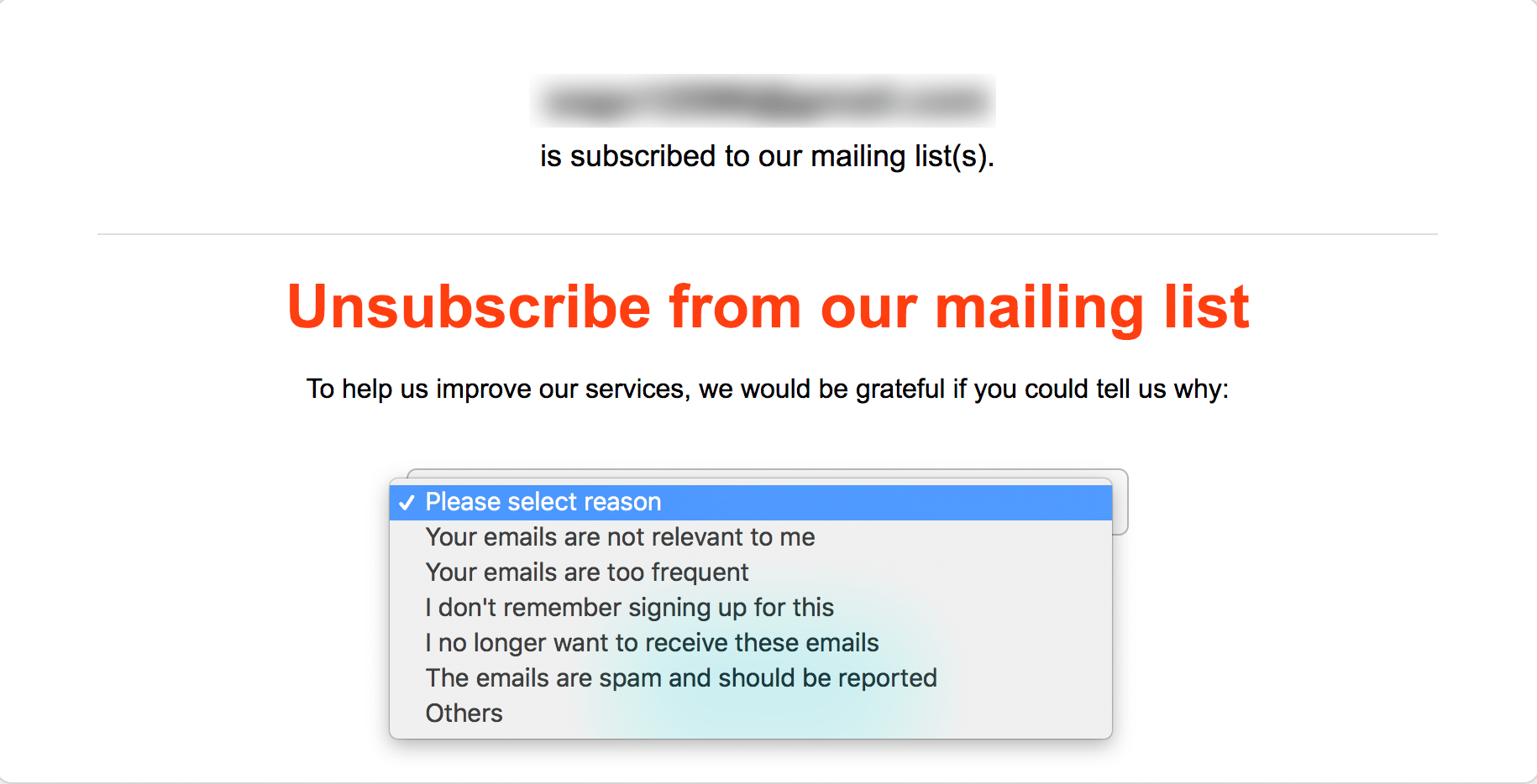
By creating a score based on what the lead does, and how long ago they did it, you can effectively automate marketing campaigns.
Put simply, the automation can handle the decision of when and what to send the prospective customer next.
Perhaps one of the most valuable components of email marketing is the ability to automate.
The goal is to foster a natural progression of interest from the customer’s side. Automation and triggered actions can do this with data and smart rules, and campaign workflows.
Think of your campaign as a branching tree, with many possibilities at each fork. If the lead clicks through to the product’s landing page and closes after a minute, your next email will be different from if they click directly on your pricing page or add something to the cart.
By adding automation to the email marketing campaigns, you can effectively choose what to do next for each customer.
This creates a limitless variety of customer experiences, all while handling many more clients than would be possible with a manual email marketing process.
Top Email Marketing Tools To Consider
A few companies on the market have pioneered many of the features and capabilities of email marketing that we see above. Let’s look at each one briefly.
MailChimp

If you’re interested in email marketing at all, you’ve probably heard of MailChimp. MailChimp has the unique ability to connect to social media, email marketing, and even print media.
It also has some basic CRM systems integrated, enabling your marketing team to use analytics to better manage their resources. If you need to send that data elsewhere, MailChimp’s integrations to external CRMs are compelling.
Sendinblue

Sendinblue has a similar feature set to the other tools seen here, but they don’t specialise in printed media. They also include integrations, analytics, and basic built-in CRM capabilities.
They’re currently offering more features than Mailchimp on their free subscription. Many people who use Sendinblue report that transparent pricing is their favourite part.
Outfunnel
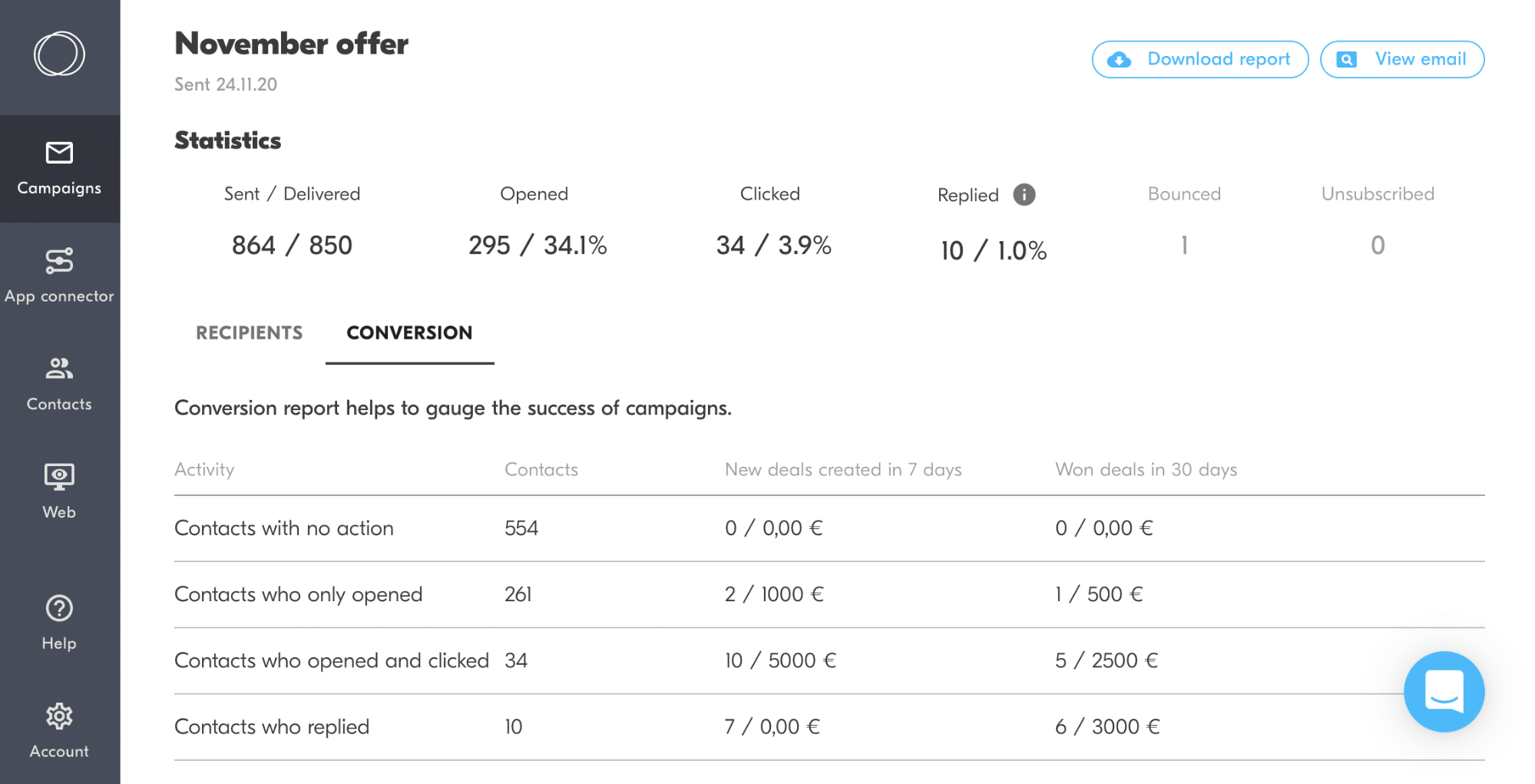
Outfunnel is specially designed to integrate well between Pipedrive CRM, Copper CRM, and Mailchimp, as well as its email management system. It works well for people who already have a CRM and need to integrate the CRM with outreach tools.
Outfunnel includes dynamic sender capabilities and lead scoring, which works with rules within the CRM. It’s also one of the most intuitive systems to set up compared to others on this list.
HubSpot

HubSpot is a marketing hub software solution, which helps marketers manage leads across several different platforms, such as social media and email. Customers enjoy using workflows to help create marketing funnel segmentation and generate marketing qualified leads.
It works well as an all-in-one platform for small and medium businesses, especially for non-marketers, product managers, or people who wear many hats.
One of HubSpot’s best aspects is its marketing educational materials, including extensive onboarding support. This makes it an easy software to recommend for beginners starting out or companies that currently don’t segment their email or social media audiences.
Systeme.io
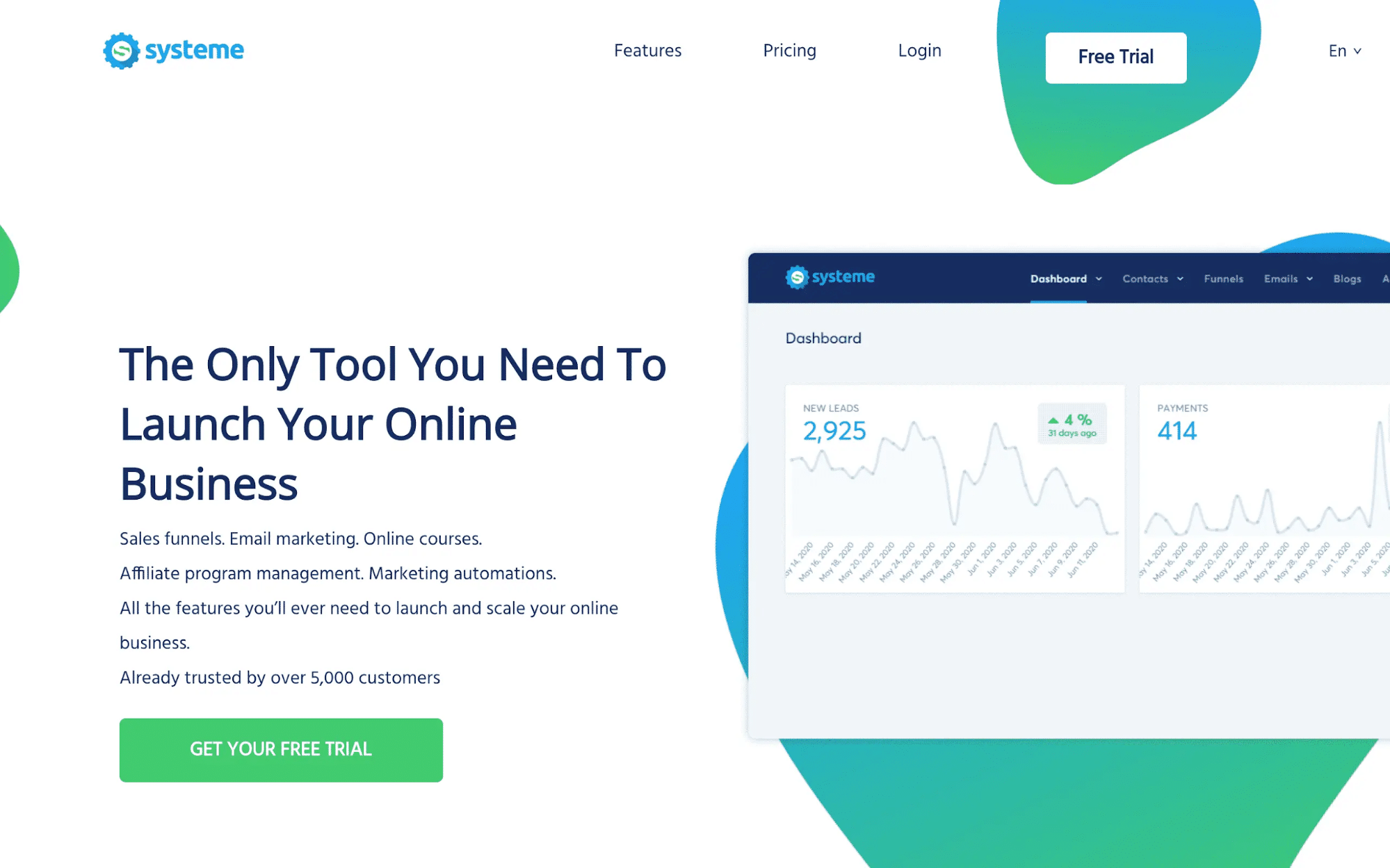
Systeme.io is an all in one marketing tool created in 2018 by a french entrepreneur for anyone launching an online business.
It has the main features used by online entrepreneurs: email marketing, sales funnels, affiliate program management, blogging, sales pages, upsells, courses hosting.
The customers say it’s better than Clickfunnels and Kartra and the email deliverability is higher than its competitors.
ConvertKit
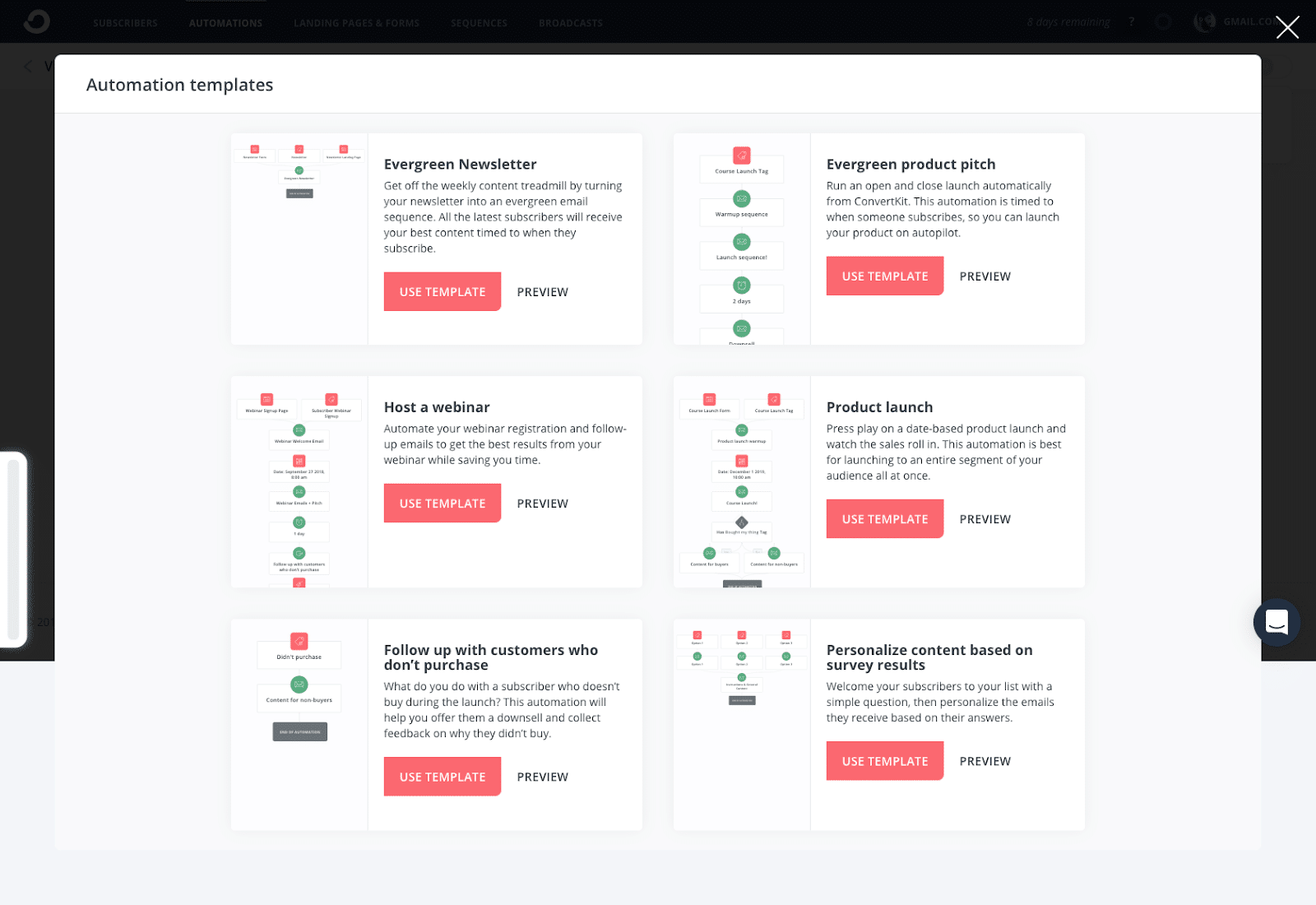
ConvertKit is a relatively new email marketing tool focused on coders or technical marketers. It’s excellent for creating specialised rulesets to tag leads and works well for bloggers to manage their content subscribers.
It’s targeted towards medium or large businesses, and because of the focus on ultra-targeted campaigns, it can be beneficial. As time goes on, we’ll see if they are easier to use than MailChimp, as they claim.
Don’t Be Afraid To Mix And Match
Over the last couple of years, significant competition has been heating up in the space of email marketing. Your company might have been involved with email marketing for more than five years, or you might be just starting out.
If there’s a general theme to your email marketing strategy, it should be to get ready to mix and match.
Like your individual emails, the more customisation you do with your marketing strategy and software, the better it will work for your specific audience.
Be wary of tools that claim to be an “All-In-One” marketing toolbox. Usually, those tools have significant drawbacks in one way or another.
Suppose your company has the time and resources to develop a full-scale email marketing department.
In that case, you should train marketers that understand email marketing fundamentals and apply these principles to all segments of your CRM, social media, email outreach, sales, and even support.
Today, email marketing is as much of a data analytics game as anything. If your company can integrate those insights into all aspects of your business, you’ll be truly utilising email marketing principles to their maximum potential.
Originally published Apr 23, 2021, updated Jan 16, 2023
